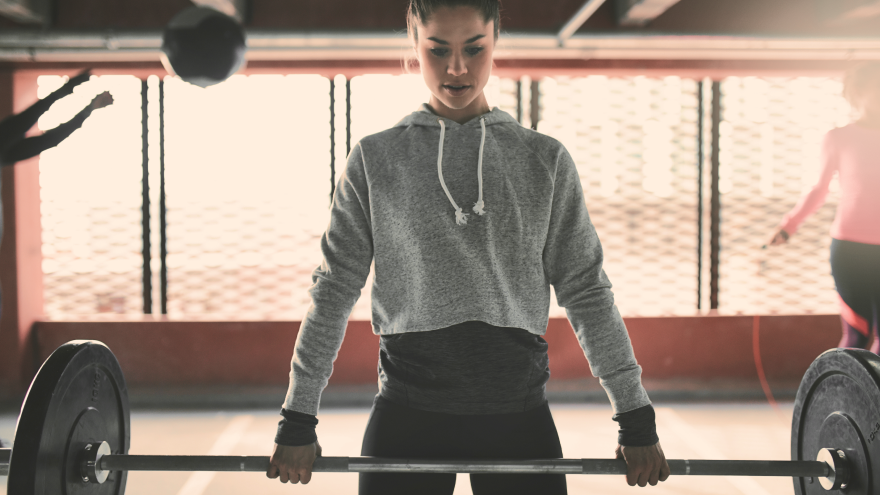There are actually two types of fitness / strength exercises in the gym. Compound exercises and isolation exercises. In a compound exercise several muscles work together to make a movement and with isolation exercises only one muscle or one muscle group works to make a movement. This article breaks down the differences between the two.
The compound exercise
As mentioned earlier, in a compound exercise several muscles or muscle groups must work together to make a movement. In addition, multiple joints are used during the exercise to complete the movement. Compound exercises are therefore also called multi-joint exercises. In addition to the target muscle, with compounds you also train the muscles that help with the movement, i.e. the synergists and the muscles that keep your body stable. Think of a squat where the focus is on the thigh muscles, but where, among other things, the hamstrings and glutes also have to work and while your back muscles and abs must keep your body stable.
With compound exercises you usually use heavier weights than with isolation exercises. After all, you use several muscles at the same time. The general increase in strength with compound exercises is therefore greater than with isolation exercises because the synergists and stabilizers also work very actively during the movement. But the best thing is that this greater muscle activation also provides a better growth stimulus, which in turn will result in more muscle mass.
Why train with compound exercises?
There are a number of reasons why a training with compound exercises is chosen.
By engaging multiple muscles and muscle groups, a compound training provides:
- Stimulation of so-called “functional” exercises
- Being able to complete a full-body workout faster.
- Improvement of reaction time, balance and coordination
- Better stability in the joints
- A higher calorie burn during performance
- An increase in overall strength
- An increase in overall muscle mass
The isolation exercise
An isolation exercise is one that specifically targets specific muscles or muscle groups. It is often performed with only one movement in one joint. Think of, for example, the bicep curl. You can use an isolation exercise to focus purely on one muscle or muscle group. Sometimes this form of training is useful to help strenghten and improve an underdeveloped main muscle. Lagging behind can be due to that the muscle has too little strength.
An isolation exercise purely to increase strength can then be very useful, for example when a muscle could not be trained for some time due to an injury. Even when a muscle lags behind or differs in mass, an isolation exercise can provide some compensation when it is properly stimulated. For example, difference in mass between left and right biceps.
Why train with isolation exercises?
Possible reasons for choosing isolation exercises and focusing on one muscle or muscle group are:
- Reducing muscle imbalance
- Increase specific muscle strength of the “target” muscle
- Increase muscle mass of the “target” muscle
- Relieving other muscles due to injury or fatigue
- Giving a muscle “extra” attention.
When do you use which exercises?
Compound exercises and isolation exercises both have their own benefits and a combination of both will ensure that the muscles and muscle groups are stimulated as much as possible. When building muscle mass has the highest priority, a training schedule based on compound exercises is inevitable. You can then complement with isolation exercises to make up for the small differences in strength and strengthen or improve the compound exercises. With isolation exercises you can stimulate the underdeveloped muscles to reduce the difference in muscle mass or focus on muscles that are fatigued by compound exercises.
With compound exercises you target multiple muscles and a maximum number of muscle fibers in less time.
You do an isolation exercise to “fine tune” specific muscles.
A good training will then preferably consist of two to four compound exercises for maximum activation of the number of muscles and muscle fibers. Then you finish with one or two isolation exercises to put maximum tension on the muscle.



